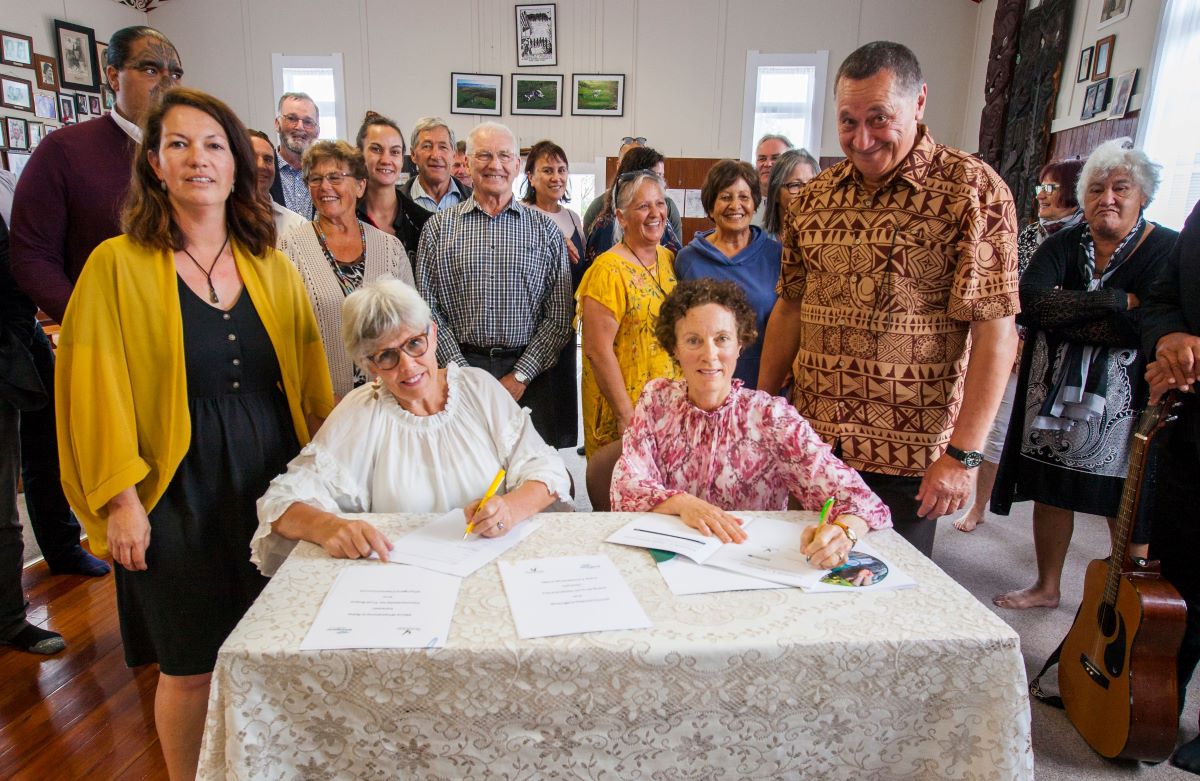Patuharakeke, councils sign important resource management agreements
7 Dec 2020, 8:00 AM
Separate agreements are now in place covering how Patuharakeke hapū and the Northland Regional and Whangarei District Councils will jointly approach future resource management issues within the hapū rohe (area).
Manawhakahono ā Rohe (MWR) agreements were introduced into the Resource Management Act (RMA) in 2017 by the Crown as a way of providing more opportunities for tangata whenua involvement in RMA processes.
Patuharakeke describes itself as a ‘composite’ mid-north hapū descended from most of Northland’s major iwi groups; its website says its rohe stretches from north of Mangawhai Heads to the entrance of the Mangapai River just south of Whangarei. (The rohe extends inland to include the Brynderwyn (or Piroa) and Kakanui Ranges.)
The two councils on Saturday 05 December entered into separate MWR agreements with Patuharakeke in what is being hailed as a significant step in developing their mutual relationships. The agreements are among some of the first to be endorsed nationally and come just weeks after New Zealand’s first MWR was officially signed by the West Coast Regional Council and Poutini Ngāi Tahu in late October.
Northland Regional Council Chair Penny Smart, who signed the MWR agreement on behalf of the regional council at the Takahiwai Marae at the weekend, says the vision of the binding agreement is ‘He waka hourua eke noa’.
“This translates as a double-hulled canoe embarking on a voyage of unity and aims to improve the working relationship between tangata whenua and councils.”
Whangārei District Mayor Sheryl Mai, who signed a similar agreement with Patuharakeke on behalf of the district council, says it represents “a significant strengthening” of the already close relationship the parties had.
Patuharakeke Trust Board’s Acting Chair Gilbert Paki says while legally the decision-making responsibilities under the RMA remain with councils, MWR agreements provide an additional, important opportunity for tangata whenua to influence and have their say on resource management issues generally.
Juliane Chetham, the board’s Environmental/Taiao Unit Manager says the Manawhakahono ā Rohe agreements signed with the two councils would provide a greater understanding of the parties’ expectations and aspirations across a raft of issues, and more importantly, be a significant step in the practical realisation and implementation of those aspirations on the ground.
“They’ll also provide additional clarity about priority areas of concerns for us as a hapū.”
Chair Smart says much of the MWR agreements formalise processes the two councils are already undertaking.
“In this case, they’ll set out how the Patuharakeke Trust Board will be involved in planning and resource consent processes, and how councils will provide support through training, providing in-house expertise (such as GIS mapping), and access to some funding.”
Funding/resources would be available to help tangata whenua develop – or in this case renew – their Environmental Management Plans and open the door for potential regional council support of mātauranga Maori-based environmental monitoring.
The regional council says its MWR agreements will last for six years from signing but will be reviewed and can be extended by mutual agreement.

Whangārei Mayor Sheryl Mai, (seated left) and Northland Regional Council Chair Penny Smart sign the Manawhakahono ā Rohe agreements at Takahiwai Marae at the weekend. Standing beside them are Juliane Chetham, Patuharakeke Trust Board’s Environmental/Taiao Unit Manager, left, and the board’s Interim Chair Gilbert Paki.
